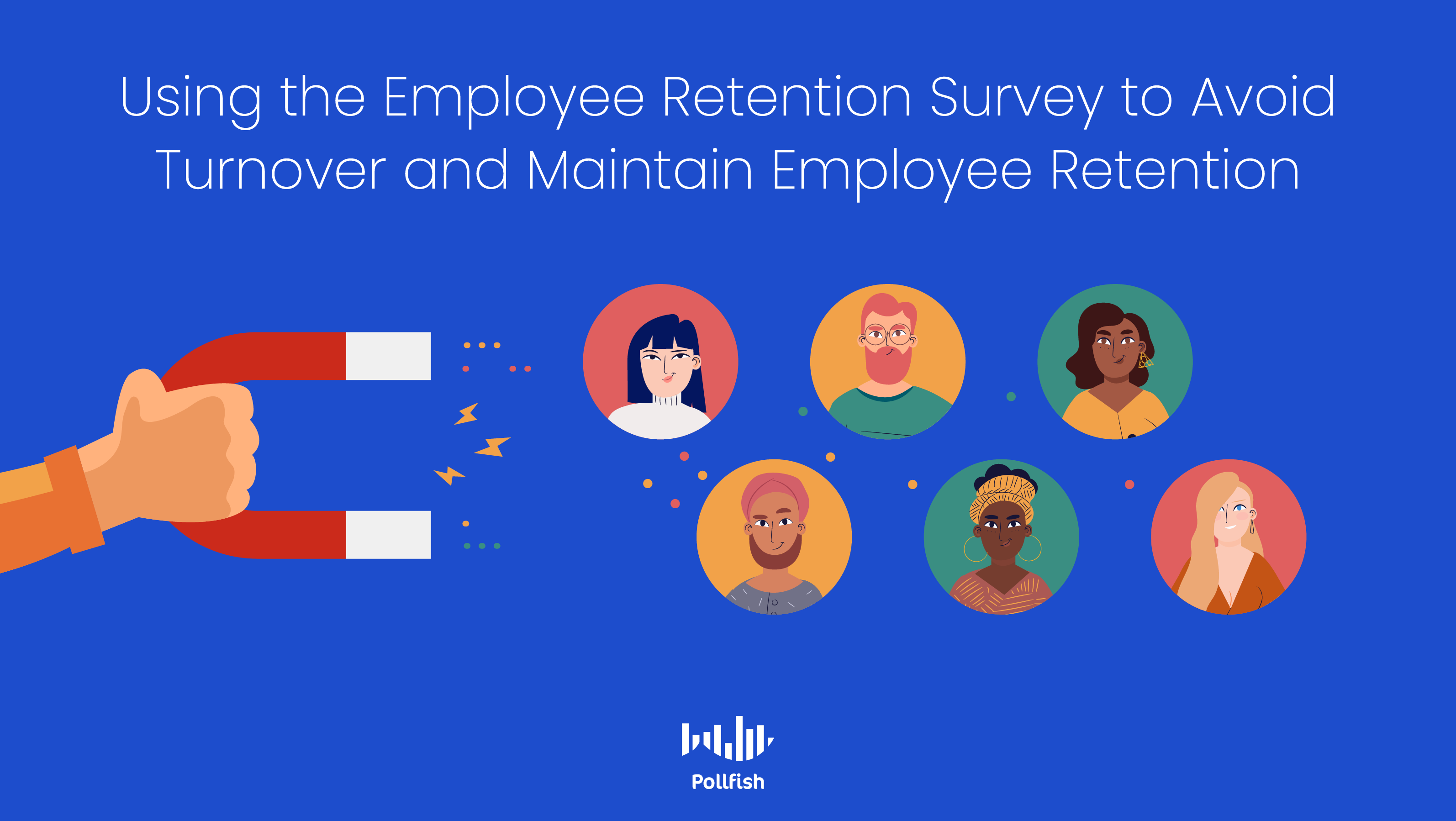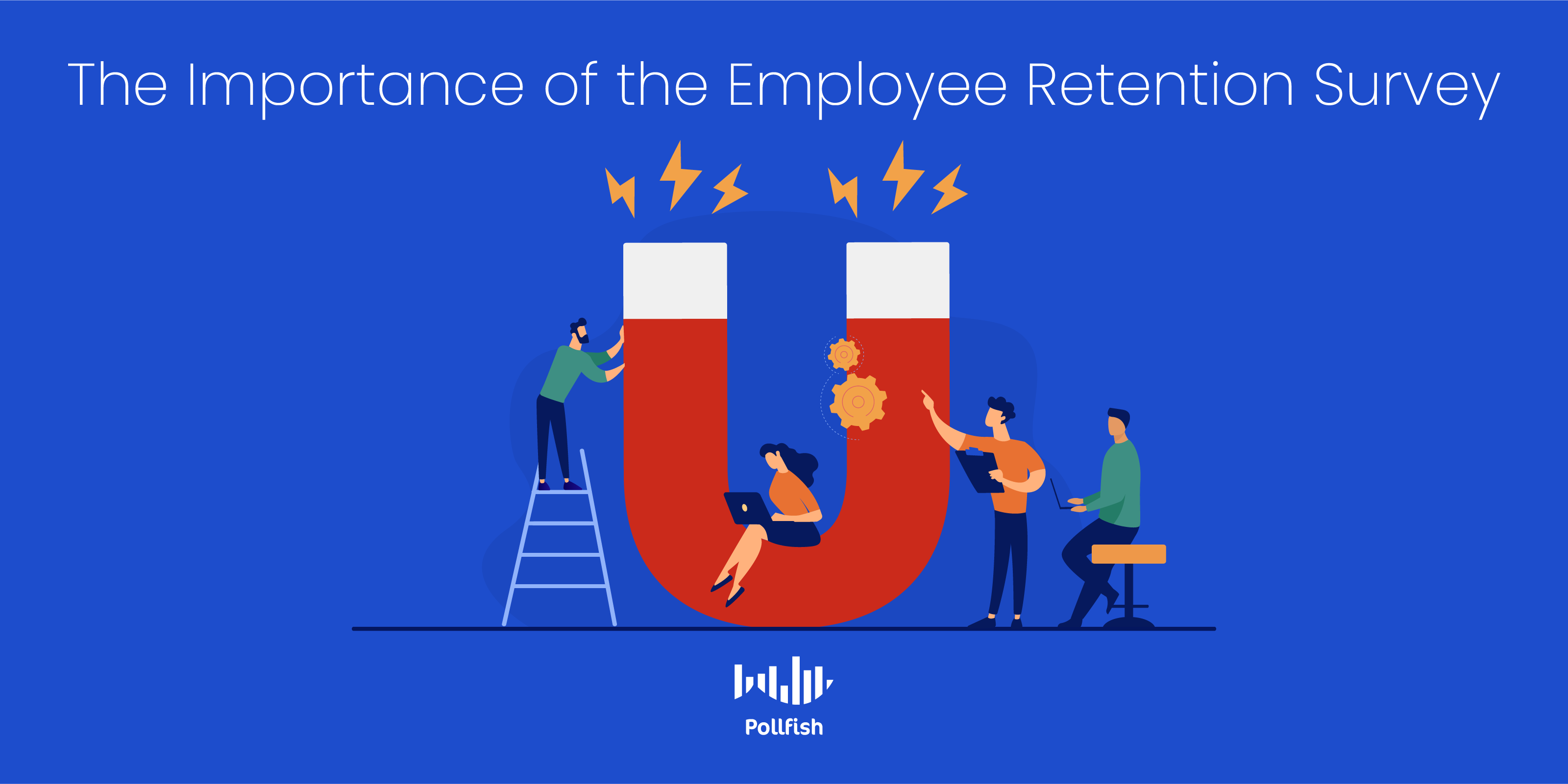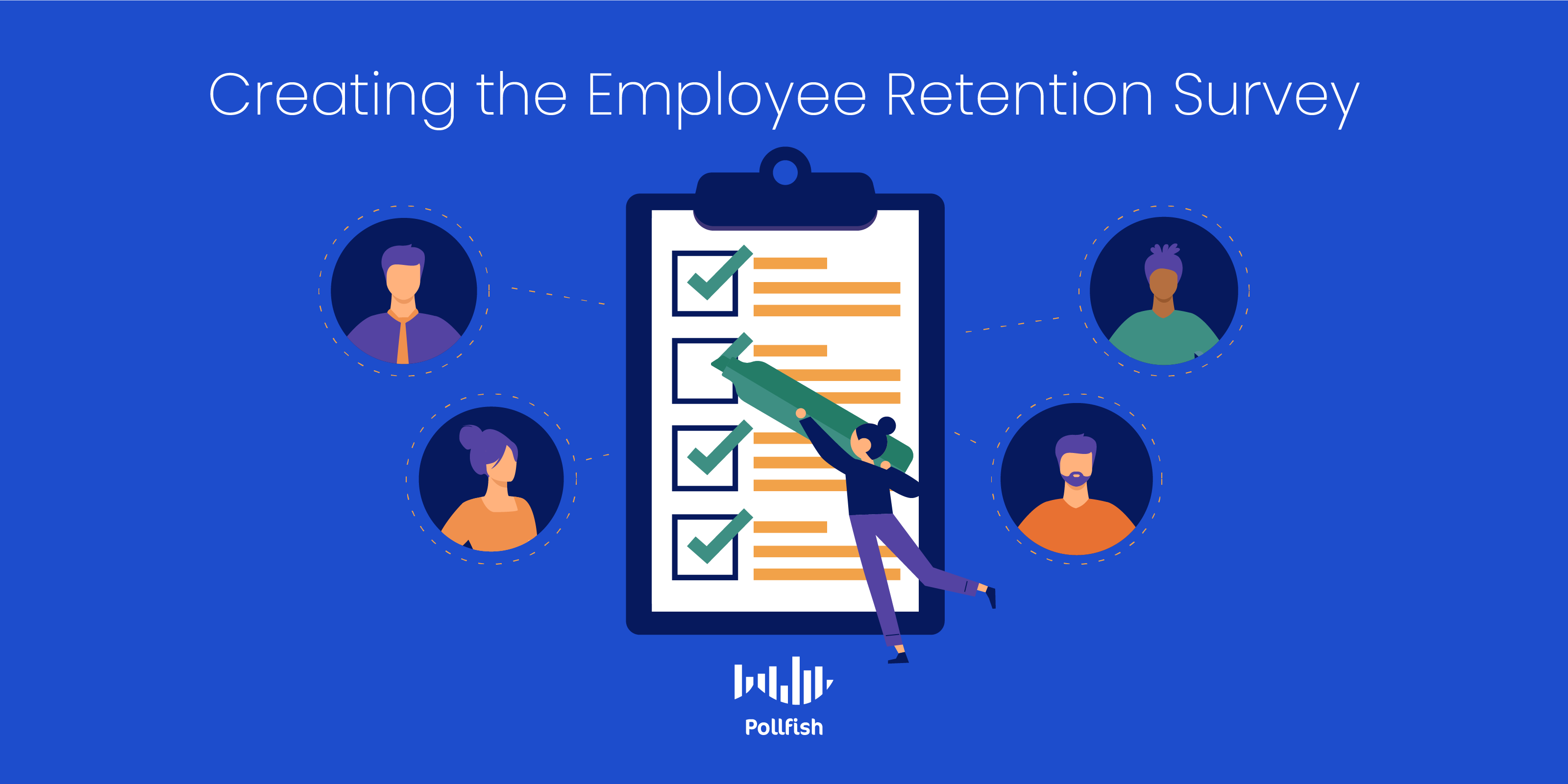Diving Into the Employee Retention Survey to Avoid Turnover

All businesses must conduct the employee retention survey periodically, should they seek to secure employee morale and minimize turnover.
Employee retention is an absolute necessity, as it is the employees that enable a company to operate smoothly, if not entirely. Businesses that fail to prioritize employee retention pay the steep price of high turnover and the ensuing poor reputation. This directly affects brand equity and the overall state of a business.
Despite the importance of employee retention, there are several concerning statistics when it comes to this business aspect. First off, although the average and ideal employee retention rate is 90%, almost 4 million American employees have quit their jobs in April 2021 alone.
More troubling is the fact that 31% of employees have quit their job within the first 6 months of starting with a company. Given these grim statistics, it is no wonder that almost 50% of HR leaders say employee turnover and retention is their top challenge.
Clearly, employee retention is a key challenge that many companies have not been able to properly work out and fully resolve.
This article explains the employee retention survey, its importance, when to use it, how to create it and more.
Understanding the Employee Retention Survey
As its name implies, this is a kind of employee feedback survey, designed specifically to help businesses retain their employees. This kind of survey is constructed so that business owners and HR workers can understand the ideal environments and needs of their employees, so that, in turn, the employees stay with the company.
This kind of survey examines employees on their needs, motivations, desires and current perception of their working environment, understanding of business expectations, along with those of their own position, their sense of belonging, comfort levels, rapport with other employees and more.
Employee retention refers to the number of employees a company manages to keep within a specific period of time. The higher your employee retention is, the longer your employees stay with your company.
Given that the employee retention survey is premised on keeping employees, this kind of survey can include elements from the following survey types:
- The employee satisfaction survey
- The employee burnout survey
- The employee recognition survey
- The eNPS survey, or Employee Net Promoter Score survey
Essentially, this survey can delve into any employee and work-related topic that can assess employee happiness. As such, you can use these kinds of survey types for brainstorming the questions and format of your employee retention survey.
You should also consider regularly running all of these surveys alongside one another, or at least elements of them in one survey, to stay attuned to how your employees are faring in their positions.
The Importance of the Employee Retention Survey
This survey is important on many fronts. It is chiefly important due to the idea of retention. Although employees come and leave organizations frequently, this is not something that businesses should accept.
Instead, businesses should attempt to retain their employees, as high turnover rates harm them. Having to replace employees can be a long and costly process. There is also no guarantee that replacements will perform as well as the employees who left.
However, as previously mentioned, retention statistics are bleak. As a matter of fact, the average employee turnover rate in 2021 in the US is almost 60%. This means that most companies retain less than half of their employees.

Low retention and high turnover rates reflect poorly on your company, damaging your reputation in their wake. Besides these issues, it will make future and current job seekers hesitant about joining your company.
High employee retention, on the other hand, is rightfully desired, a high employee retention rate maximizes profits. This is because employees who have been with a company longer are far more acclimated with the business than new employees, owing to better performance and knowledge of company processes.
Employees you retain for longer periods do not merely require less training than new employees but tend to be more loyal to the company. In turn, they boost morale and can act as employee advocates for your business. They would do so by recommending your company to others by leaving positive online reviews, through word of mouth and leaving high eNPS scores.
While high employee retention rates can raise profits by four times, high employee turnover is responsible for major US companies spending upwards of $1 trillion on finding and recruiting replacement workers annually.
High employee retention rates can be achieved with the employee retention survey, as businesses who craft it carefully with the proper online survey platform can gain valuable insights on their employees. They can then use these insights to transform and improve their work environments.
A whopping 90% of workers say they are more likely to stay at a company that takes and acts on feedback. Therefore, businesses can directly increase their employee retention by using the employee retention survey. The key is to know when to use them, how to craft them and using a trustworthy online survey platform.
When to Use the Employee Retention Survey
Deciding on the best time to send a survey can be difficult, as there are plenty of other critical business concerns and goings-on. Besides, you ideally would need your employees to dedicate their time to their work, as opposed to taking a seemingly non-essential task.
As such, you should know that there are several opportune times to create, send and analyze your employee retention survey. The list below features these times, along with periods of certain business intents, such as improving something in the employee experience.
- Annually, biannually and quarterly to get a broad view of employee sentiment.
- If you use surveys during all of these time frames, consider setting up different themes for each survey.
- For example, some surveys should be on their own performance, while others can focus on their feelings and perceptions about your business.
- During major times of change, such as a merger and/or acquisition.
- You should wait about a month before implementing this survey, as your employees need to get used to the change, along with its effects on their own positions and new colleagues.
- After a company event, such as a sales event, or a cultural event with your team.
- After they take a training course on your company’s tools and protocols, along with one to enrich their knowledge, such as a course employees are assigned to get a certification after their completion.
- After they’ve completed a major assignment, for example, one that completes their quarterly or other, non-time-based objectives.
- During transitions to different teams or managers.
- After objectives and goals have been communicated to and assigned to your employees.
- These often occur at the end or start of a new quarter or bi-annually.
- During times in which you feel your team needs to improve its productivity.
- This often involves times where employees aren’t hitting their goals, or are doing so with difficulty.
- If you’ve noticed, or have been told by HR about moments of tension between employees or employees and their workload.
- When you seek to improve company culture or are curious as to how your employees feel in regards to your business and their job as a whole.
How to Create the Employee Retention Survey

To create the employee retention survey, first decide on the larger purpose of the survey. Use the above section as a guide in terms of the theme and timeframe of the survey. Then, form a preliminary set of questions.
Use a variety of questions to keep your employees engaged and reap quality insights, the kind that won’t require you to elicit more insights/ survey studies. Start by learning about the 6 main types of survey questions. Apply the most relevant types of question types for your set of preliminary questions.
For example, some questions should use a scale, such as Likert scale questions or the aforementioned eNPS survey and its major question. Other questions will warrant using close-ended questions with multiple answers and so on.
You’ll also need to use open-ended questions if you seek to create a qualitative survey. In addition, many times, businesses use open-ended questions as follow-up questions.
For example, if your preliminary question was “which of the following projects did you like working on?,” the follow-up question ought to be “why?,” which requires a thoughtful, in-depth answer that multiple-choice answer questions cannot always provide (although in some cases, you can use multiple-choice questions as follow up questions.
When creating follow-up questions, use advanced skip logic, the online survey mechanism that routes respondents to particular follow-up questions. These questions must be relevant to their answer to a preliminary question.
After completing your questionnaire portion, find the most convenient time for you to send your employee retention survey to your team, along with the most fitting time to announce it and elicit their responses.
If you’d like to learn how to create employee retention survey questions, you can find them in the link provided, along with examples.
Don’t forget to create a “thank you” portion to the survey or a note in your post-survey email to show your team your appreciation and gratitude, along with the importance of their feedback. This provides common courtesy, along with making your employees feel seen and heard.
Use the Distribution Link feature to send the survey to your team. Then, parse the results by filtering data on the dashboard of your online survey platform. Analyze survey data and convene with the HR team to discuss your findings. Finally, take the necessary actions to make improvements for your employees.
Augmenting Your Workspace to Retain Talent
According to various employee retention statistics, including the ones in this article, companies can’t continue to afford to lose their people and to recruit new ones in their place. They should strive for high levels of employee retention and can achieve this through the employee retention survey.
In order to form and deploy such a survey, you’ll need to use a high-performing online survey platform, ideally, one that is easy to use, allowing you to make a survey in just three easy steps.
Additionally, you should also use a mobile-first platform, as mobile dominates the digital space, so you would need a survey tool built with the best mobile experience. This is especially important, as many employees will likely take your survey on their mobile devices.
Most importantly, the online survey platform you use should allow you to survey specific people. As such, you’ll need a platform with a reach to millions of consumers, along with one that offers the Distribution Link feature.
When you use an online survey tool with all of these capabilities and more, you can easily foster employee retention with a strong employee retention survey.
Pollfish Marketing Team
Ready to Try Pollfish?
Create your survey with AI, target high-quality respondents starting at $0.95 per complete, and start getting results in just minutes in real-time. From running a simple product concept survey to managing a constant stream of trackers for dozens of clients in dozens of countries, we’ve got you.
